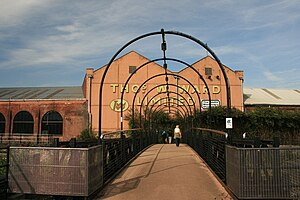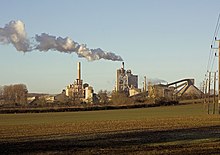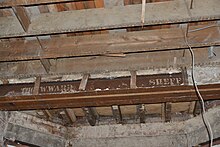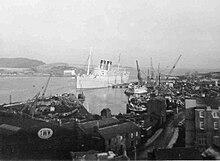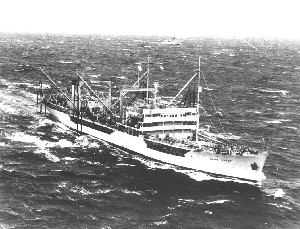
RFA Wave Chief was a Wave-class fleet support tanker of the Royal Fleet Auxiliary that was built in 1946 as SS Empire Edgehil by Harland & Wolff, Govan, Glasgow, United Kingdom.

RFA Abbeydale (A109) was a fleet tanker of the Royal Fleet Auxiliary and was originally one of six ships ordered by the British Tanker Co which were purchased on the stocks by the Admiralty. She was built by Swan Hunter and Wigham Richardson Ltd and launched on 28 December 1936. Abbeydale served until being decommissioned on 18 September 1959 and laid up at HMNB Devonport. She was then sold for scrapping, arriving at the Thos. W. Ward breakers' yards at Barrow-in-Furness on 4 September 1960.

Swan Hunter, formerly known as Swan Hunter & Wigham Richardson, is a shipbuilding design, engineering, and management company, based in Wallsend, Tyne and Wear, England.

RMS Majestic was a British Ocean liner working on the White Star Line’s North Atlantic run, originally launched in 1914 as the Hamburg America Liner SS Bismarck. At 56,551 gross register tons, she was the largest ship ever operated by the White Star Line under its own flag and the largest ship in the world until completion of SS Normandie in 1935.
R. & W. Hawthorn, Leslie and Company, Limited, usually referred to as Hawthorn Leslie, was a shipbuilder and locomotive manufacturer. The company was founded on Tyneside in 1886 and ceased building ships in 1982.
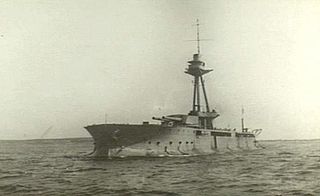
HMS Abercrombie was a First World War Royal Navy Abercrombie-class monitor.

RMS Maloja was a British ocean liner that saw service from 1923 to 1954.
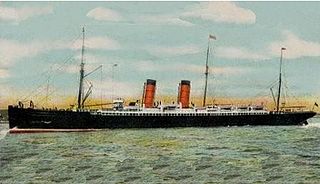
RMS Etruria was a transatlantic ocean liner built by John Elder & Co of Glasgow, Scotland in 1884 for Cunard Line. Etruria and her sister ship Umbria were the last two Cunarders that were fitted with auxiliary sails. Both ships were among the fastest and largest liners then in service. Etruria was completed in March 1885, twelve weeks after Umbria, and entered service on the Liverpool – New York route.

Coventry Ordnance Works was a British manufacturer of heavy guns particularly naval artillery jointly owned by Cammell Laird & Co of Sheffield and Birkenhead, Fairfield Shipbuilding and Engineering Company of Govan, Glasgow and John Brown & Company of Clydebank and Sheffield. Its core operations were from a 60-acre site in Stoney Stanton Road in the English city of Coventry, Warwickshire.

Hadfields Limited of Hecla and East Hecla Sheffield, Yorkshire was a British manufacturer of special steels in particular manganese alloys and the manufacture of steel castings.
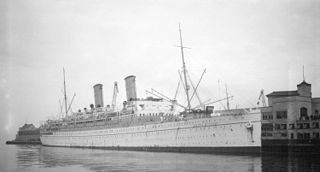
RMS Empress of France, formerly SS Alsatian was an ocean liner built in 1913-1914 by William Beardmore and Company at Glasgow in Scotland for Allan Line. In total, the ship's service history encompasses 99 trans-Atlantic voyages, 5 trans-Pacific voyages, and 8 other cruises in addition to her war service.
Thomas William Ward was a scrap metal merchant and shipbreaker from Sheffield, England, most famous for the establishment of his company Thos. W. Ward Limited, and its First World War-era "employee" Lizzie the Elephant.

The Imperator-class was a series of three large ocean liners designed and built for the Hamburg America Line (HAPAG). Envisaged by HAPAG chairman, Albert Ballin, the three ships - Imperator, launched in 1912; Vaterland, launched in 1913; and Bismarck, launched in 1914 - each displaced over 50,000 tons, with each successively holding the title of the world's largest passenger ship. All three were interred by the United States during the First World War, and were turned over to the Allies as reparations following the war's end.

Stannington is a suburb in the City of Sheffield, England. The area is located in the civil parish of Bradfield, and is in the electoral ward of Stannington. Stannington is situated on the western edge of the Sheffield urban area

HMS Vectis (D51) was a V-class destroyer of the British Royal Navy that saw service in World War I and the Russian Civil War.
HMS Violent was a V-class destroyer of the British Royal Navy that saw service in World War I and was in commission from 1917 to 1937.

HMS Venturous (D87) was a V-class destroyer of the British Royal Navy that saw service in World War I.

Ketton Cement Works is a large cement plant and quarry based in the village of Ketton in the county of Rutland in the United Kingdom. Now owned by HeidelbergCement, the plant produces around one tenth of the UK's Portland Cement needs. Ketton works employs around 220 people and is at the forefront of sustainable cement production, namely through the increasing use of non-fossil fuels for the kilns.
Dormer Pramet is a global manufacturer and supplier of cutting tools for the engineering industry, including drilling, milling, threading and turning tools. Its origins date back to 1913, making it one of the world's oldest specialist manufacturers of engineers cutting tools.
The Laycock Engineering Company Limited of Archer Road, Millhouses, Sheffield, Yorkshire, England was an engineering business established in 1884 by W S Laycock which made small and major components for railway rolling stock.
